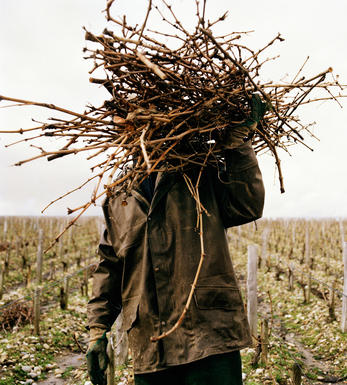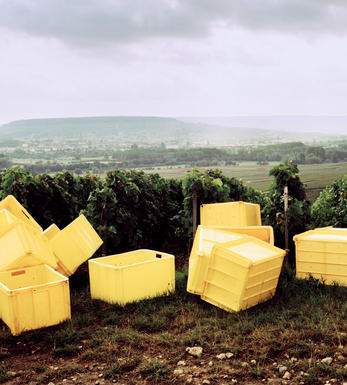
Champgagne Pierre Paillard, Les Parcelles, Grand Cru, Extra Brut (Base 17)

Critics reviews
Disgorged in July 2021 with one gram per litre dosage, Paillard's NV Extra-Brut Bouzy Grand Cru Les Parcelles XVII is based on the 2017 vintage.
Offering up aromas of lemon oil, nectarine, freshly baked bread and hints of honeycomb, it's medium to full-bodied, deep and vinous, with a layered core of fruit, racy acids and a saline, bone-dry finish. Complemented by an elegant pinpoint mousse, this is a classy, impeccably balanced wine that transcends the challenging vintage.
Drink 2021 - 2035
William Kelley, Wine Advocate (January 2022)
The NV Champagne Grand Cru Les Parcelles Bouzy Extra Brut is 70% Pinot Noir with the remainder Chardonnay, with the base wine coming from the 2017 vintage.
It reveals very attractive aromas of toasted brioche, raspberry, lavender, and black cherry, and it is dry and inviting, with pure red fruits that fill the palate, with its florality lasting long after the finish, with a cleansing lift of salinity. This beautiful wine is deceptively easy drinking now. Disgorged July 2021.
Drink 2022 - 2032
Jeb Dunnuck, JebDunnuck.com (July 2022)
About this WINE

Champagne Pierre Paillard
The family-owned winery is managed by the eighth generation of the Paillard family, Antoine and Quentin Paillard, who continue to uphold the tradition of crafting exceptional Champagnes. The estate owns and manages around 11 hectares (approximately 27 acres) of vineyards, primarily located in the prestigious Grand Cru village of Bouzy.
Bouzy is renowned for its exceptional Pinot Noir grapes, which play a significant role in the Paillard Champagnes. The vineyards are sustainably farmed, with a strong emphasis on preserving the natural environment and expressing the region's unique terroir. The combination of the village's south-facing slopes and the calcareous-clay soils contribute to producing high-quality, expressive grapes.
The estate strongly focuses on terroir expression and each vintage's individual characteristics, creating Champagnes that reflect the unique attributes of the specific growing season. These are typically produced by blending Pinot Noir and Chardonnay grapes to achieve a balanced and elegant style.
The estate's flagship wine is the Grand Cru Brut, a blend of Pinot Noir and Chardonnay sourced from Grand Cru vineyards. They also make a delightful Grand Cru Brut Rosé Champagne, made from a combination of Pinot Noir and Chardonnay, with the addition of still red wine produced from Bouzy's Grand Cru Pinot Noir grapes.
The Les Parcelles Cuvée highlights the diversity of Bouzy's terroir by showcasing the individual character of specific vineyard plots. Les Maillerettes, on the other hand, is a special single-vineyard Champagne produced from the oldest vines on the estate, offering exceptional depth and complexity.

Champagne
Our wine buyers leave no stone unturned in their quest to find the best Champagnes, and Berry Bros. & Rudd takes particular pride in its eclectic range of artisan Champagnes that represent a real sense of terroir, original winemaking, labour-intensive viticulture (often organic/biodynamic) and the uncompromising excellence of the end product.
How Champagne is made
In 1668, in the village of Hautvillers, the monk turned cellar master, Dom Pérignon, is said to have discovered how to make sparkling wine; while the same technique is used all over the world today, the region of Champagne continues to make some of the finest.
So what makes wine sparkle? Adding a solution of sugar and yeast to a white wine starts another fermentation in the bottle which results in the bubbles. Once the yeasts have done their job, a sediment known as ‘lees’ collects on the side of the bottle; contact with this deposit during maturation gives the wine its characteristic flavours of freshly-baked bread, toast and biscuit. Once this sediment is isolated (remuage) and removed (dégorgement), the Champagne is topped up with a sugar solution to make it dry or sweet
The Champagne Wine Region
Champagne is the most northerly wine region in France and is situated north-east of Paris. There are three main vineyard areas: Côte des Blancs, Vallée de la Marne and Montagne de Reims.
Ripeness of the grapes is often a problem, which is one reason why a blend of grape varieties is usually used: the white Chardonnay to give fruit and elegance, and two reds – Pinot Noir (particularly to provide a ‘backbone’) and Pinot Meunier.
In Champagne there are around 15,000 growers and 290 Champagne houses. Traditionally, growers have sold their grapes to the Champagne houses which account for 70 percent of production and 90 percent of exports. Recently, increasing numbers of growers are making growers’ Champagnes themselves, using their own grapes.
The Champagne houses used to be organized into a Syndicat des Grandes Marques, which had 28 members, not all of them of equal quality. That has now been superseded by the Club des Grandes Marques, with 24 participants: Ayala, Billecart-Salmon, Bollinger, Canard- Duchêne, Deutz, Dom Pérignon, Heidsieck & Co. Monopole, Henriot, Krug, Lanson, Laurent-Perrier, Moët & Chandon, G.H. Mumm, Perrier Jouët, Joseph Perrier, Piper-Heidsieck, Pol Roger, Pommery, Ch. & A Prieur, Louis Roederer, Ruinart, Salon, Taittinger, Veuve Clicquot-Ponsardin.
Champagne Styles
Vintage Champagne
Made exclusively from grapes grown in a single year, this is produced only in the best years, and is released at about six years of age.
Non-Vintage Champagne
Most of the Champagne produced today is Non-Vintage, comprising the blended product of grapes from multiple vintages. Typically grapes from a single-year vintage will form the base of the blend, ranging from 15 percent to up to 40 percent.
Rosé Champagne
Typically light in colour, rosé Champagne is produced either by leaving the clear juice of black grapes to macerate on its skins for a brief time (known as saigneé), or by adding a small amount of Pinot Noir red wine to the sparkling wine cuvée. The saigneé method is more elaborate and costly, requiring highly-skilled winemaking, hence only a few houses still use it – among them Laurent Perrier and Louis Roederer.
Luxury (Prestige) Cuvée
Top of the range, this is vintage-dated. Famous examples include Louis Roederer's Cristal, Laurent-Perrier's Grand Siècle, Moët & Chandon's Dom Pérignon, Duval-Leroy's Cuvée Femme and Pol Roger's Cuvée Sir Winston Churchill.
Demi-Sec (Rich) Champagne
Demi-Sec or Rich is a medium-dry to medium-sweet style which occupies the other end of the spectrum from the standard dry "Brut" style. Brut Natural or Brut Zéro contains less than three grams of sugar per litre, Extra Brut has less than six grams of sugar per litre, and Brut less than 12 grams of sugar per litre.
Recently Disgorged Champagne
R.D. (Recently Disgorged) style was introduced for the first time by Madame Bollinger in 1961, on the 1952 Bollinger Grande Année vintage. Late disgorgement allows the Champagne to retain its freshness, vivacity and fruity expression, despite the ageing.
Blanc de Blancs Champagne
Blanc de Blancs denotes a Champagne made exclusively from Chardonnay grapes.
Blanc de Noirs Champagne
Blanc de Noir Champagnes are made exclusively from black grapes, Pinot Noir (typically) and Pinot Meunier grapes. Bollinger's prestige cuvée Vieilles Vignes Françaises is the lead example.

Champagne blend
Which grapes are included in the blend, and their proportion, is one of the key factors determining the style of most Champagnes. Three grapes are used - Pinot Noir, Chardonnay and Pinot Meunier.
26% of vineyards in Champagne are planted with Chardonnay and it performs best on the Côtes des Blancs and on the chalk slopes south of Epernay. It is relatively simple to grow, although it buds early and thus is susceptible to spring frosts. It produces lighter, fresher wines than those from Burgundy and gives finesse, fruit and elegance to the final blend. It is the sole grape in Blancs de Blancs, which are some of the richest long-lived Champagnes produced.
Pinot Noir accounts for nearly 40% of the plantings in Champagne and lies at the heart of most blends - it gives Champagne its body, structure, strength and grip. It is planted across Champagne and particularly so in the southern Aube district.
The final component is Pinot Meunier and this constitutes nearly 35% of the plantings. Its durability and resistance to spring frosts make the Marne Valley, a notorious frost pocket, its natural home. It ripens well in poor years and produces a soft, fruity style of wine that is ideal for blending with the more assertive flavours of Pinot Noir. Producers allege that Pinot Meunier lacks ageing potential, but this does not deter Krug from including around 15% of it in their final blends.


Buying options
Add to wishlist
Description
Disgorged in July 2021 with one gram per litre dosage, Paillard's NV Extra-Brut Bouzy Grand Cru Les Parcelles XVII is based on the 2017 vintage.
Offering up aromas of lemon oil, nectarine, freshly baked bread and hints of honeycomb, it's medium to full-bodied, deep and vinous, with a layered core of fruit, racy acids and a saline, bone-dry finish. Complemented by an elegant pinpoint mousse, this is a classy, impeccably balanced wine that transcends the challenging vintage.
Drink 2021 - 2035
William Kelley, Wine Advocate (January 2022)
wine at a glance
Delivery and quality guarantee